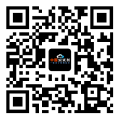详细说明
Species Reactivity
Rat
Specificity
Detects rat ALK-7 in direct ELISAs and Western blots.
Source
Polyclonal Goat IgG
Purification
Antigen Affinity-purified
Immunogen
Mouse myeloma cell line NS0-derived recombinant rat ALK‑7
Leu26-Arg108 (predicted)
Accession # NP_620790Formulation
Lyophilized from a 0.2 μm filtered solution in PBS with Trehalose. *Small pack size (SP) is supplied as a 0.2 µm filtered solution in PBS.
Label
Unconjugated
Applications
Recommended
ConcentrationSample
Western Blot
0.1 µg/mL
Recombinant Rat ALK‑7 Fc Chimera (Catalog # )
Immunohistochemistry
5-15 µg/mL
Perfusion fixed frozen sections of rat brain (hypothalamus)
Please Note: Optimal dilutions should be determined by each laboratory for each application. are available in the Technical Information section on our website.
Preparation and Storage
Reconstitution
Reconstitute at 0.2 mg/mL in sterile PBS.
Shipping
The product is shipped at ambient temperature. Upon receipt, store it immediately at the temperature recommended below. *Small pack size (SP) is shipped with polar packs. Upon receipt, store it immediately at -20 to -70 °C
Stability & Storage
Use a manual defrost freezer and avoid repeated freeze-thaw cycles.
12 months from date of receipt, -20 to -70 °C as supplied.
1 month, 2 to 8 °C under sterile conditions after reconstitution.
6 months, -20 to -70 °C under sterile conditions after reconstitution.
Background: ALK-7
Transforming growth Factor beta (TGF-beta ) superfamily ligands exert their biological activities via binding to heteromeric receptor complexes of two types (I and II) of serine/threonine kinases. Type II receptors are constitutively active kinases that phosphorylate type I receptors upon ligand binding. In turn, activated type I kinases phosphorylate downstream signaling molecules including the various smads. Transmembrane proteoglycans, including the type III receptor (betaglycan) and endoglin, can bind and present some of the TGF-beta superfamily ligands to type I and II receptor complexes and enhance their cellular responses. Seven type I receptors (also termed activin receptor-like kinase (ALK)) and five type II receptors have been isolated from mammals. ALK-2, -3, -4, -5, and -6 are also known as Activin R1A, BMPR-1A, Activin R1B, TGF-beta R1, and BMPR-1B, respectively, reflecting their ligand preferences. ALK-7 shares with other type I receptors a cysteine-rich domain with conserved cysteine spacing in the extracellular region, and a glycine-and serine-rich domain (the GS domain) preceding the kinase domain. Rat ALK-7 expression is restricted to the adult central nervous system, suggesting a possible role of ALK-7 during postnatal maturation and maintenance of several neuronal subpopulations in the cerebellum.
References:
ten Dijke, P. et al. (1993) Oncogene 8:2879.
ten Dijke, P. et al. (1994) Science 264:101.
Ryden, M. et al. (1996) J. Biol. Chem. 271:30603.
Long Name:
Activin Receptor-like Kinase 7
Entrez Gene IDs:
130399 (Human); 245921 (Rat)
Alternate Names:
activin A receptor, type IC; Activin receptor type IC; activin receptor type-1C; Activin receptor-like kinase 7; Activin RIC; ACTR-IC; ACVR1C; ACVRLK7; ALK7; ALK-7; ALK7ALK-7; EC 2.7.11; EC 2.7.11.30










 粤公网安备44196802000105号
粤公网安备44196802000105号